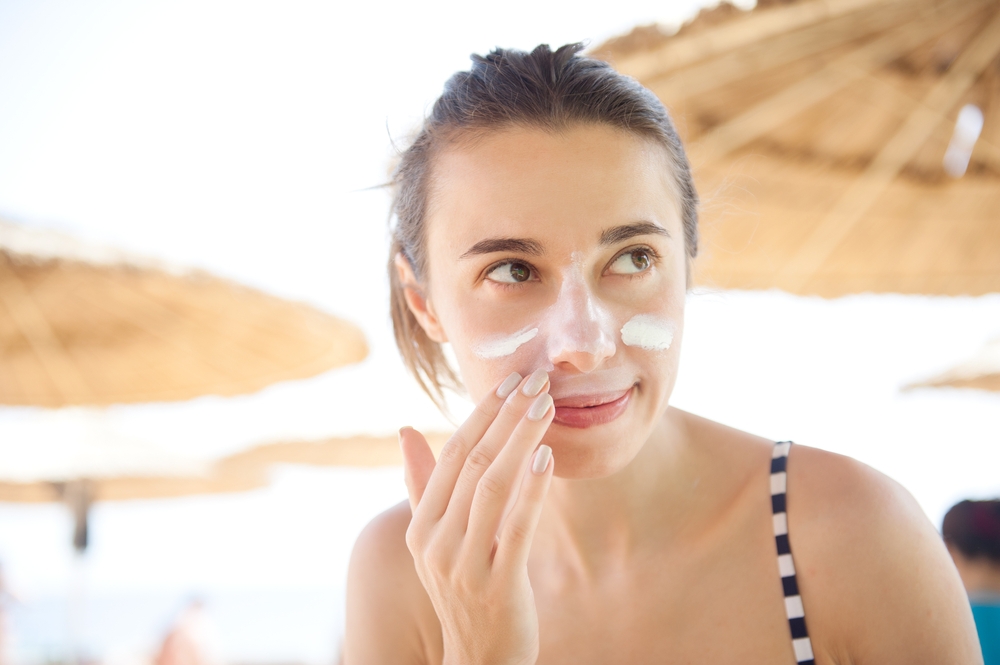
You May Be Applying Sunscreen Wrong
Our board-certified dermatologists in Jupiter, at Genesis Dermatology, know you’re diligent about applying sunscreen, even on cloudy days and in winter. Exposure to the ultraviolet (UV) rays of the sun is the leading cause of both skin cancer and premature wrinkling of the skin. But a recent report suggests there’s a right way and a wrong way to go about it.
Sunscreens are labeled with a sun protection factor (SPF) rating, which means the length of time you can stay in the sun without damage. If you would normally burn with 20 minutes’ exposure, for example, SPF 30 should protect your skin about 30 times longer, or approximately ten hours. Also see last months blog about the difference between a chemical and a physical sunscreen.
The study
For the study, published in the journal PLOS One, researchers from the University of Liverpool examined 84 participants who were directed to apply either SPF 30 sunscreen or a moisturizer containing sunscreen on each of two occasions. They were then photographed with a UV-sensitive camera to detect parts of the body subjects had missed during application. On the next visit, the products were switched, so that all participants eventually used both.
The culprit appears to be in the use of moisturizers with sunscreen, rather than with regular sunscreens. Researchers found that when substituting traditional sunscreen with moisturizers containing sunscreen, subjects tended to miss important areas such as the eyelids, nose, and ears.
“When applying both sunscreen and moisturizer, the area around the eyes is often missed, particularly near the nose,” according to the study authors. “Participants covered a smaller area of the face when using moisturizer compared to sunscreen.”
They recommend paying particular attention to the eyelid area, and considering alternative methods of protecting the eyes, such as with UV-filter sunglasses.
“The addition of SPF to daily moisturizers has lots of potential advantages in terms of likely increase in general protection in all weather conditions,” the researchers reported. “However, our data show that those potential advantages may be offset by incomplete coverage to areas at high risk of skin cancer and a mistaken belief that the face is fully protected.”
While they welcomed the addition of sunscreen to moisturizer for those who experience minimal sun exposure throughout the day, they still recommend using a traditional sunscreen for those who will be spending long periods outdoors.
“Moisturizer is not as well applied as sunscreen,” they wrote. “Therefore, if planning prolonged sun exposure, we advise sunscreen be used. If using moisturizer, we advise one with SPF. Any SPF is better than none but it should not be considered the equal of sunscreen,” they concluded.
How to apply sunscreen correctly
So, for long-time sun exposure, choose a traditional sunscreen over a moisturizer with SPF added.
The American Academy of Dermatology (AAD) offers the following tips for applying sunscreen:
- Your sunscreen should have an SPF of at least 30. Look for one labeled “broad spectrum,” which protects against both UVA (the skin-damaging) rays and UVB rays (those responsible for sunburn). If your skin is sensitive to sunscreen, use one that is free of all preservatives, para-aminobenzoic acid (PABA), chemicals, perfumes, and alcohol.
- Apply sunscreen generously before going outdoors. It takes approximately 15 minutes for your skin to absorb it enough to protect you.
- Apply enough sunscreen to cover all exposed skin. Most adults need about one ounce—enough to fill a shot glass—to fully cover their body. Rub the sunscreen thoroughly into your skin.
- Apply sunscreen to all bare skin. Remember your neck, face, ears, tops of your feet, and legs. For hard-to-reach places, ask someone to help or use a spray sunscreen. If you have thinning hair, either apply sunscreen to your scalp or wear a wide-brimmed hat. To protect your lips, apply a lip balm with an SPF of at least 15.
- Reapply sunscreen every two hours, or immediately after swimming or sweating.
- Sunscreen stored in hot areas like a car can lose potency more quickly. The ideal storage temperature is 77 degrees Fahrenheit.
Be sure to ask us if you have any questions about sunscreen or its correct use.

